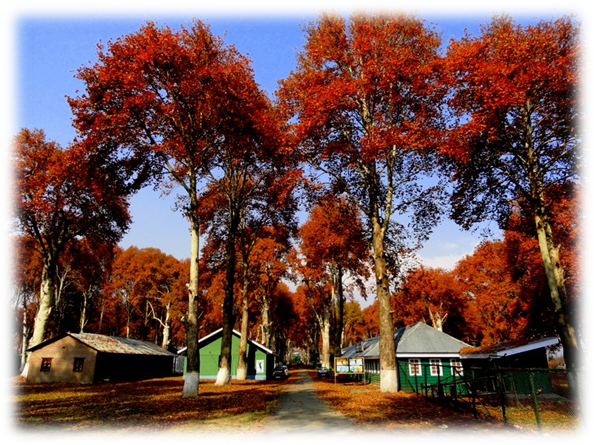Kashmir is known as land of walnuts. The walnuts of Kashmir are known for their superior quality and taste. They are locally known as 'akhrot' or 'doon'. Being organic in nature, demand of Kashmiri walnut in both domestic, and international markets increases. However, its production is decreasing every year.
Kashmir
enjoys its status as the major contributor of total walnut production in the
country. Over 90% of the country's walnut production comes from Kashmir. In
Kashmir walnuts are grown in Kupwara, Shopian, Baramulla, Budgam, Srinagar,
Anantnag, and other hilly areas. There are three varieties of walnuts grown in
Kashmir. These are locally called wonth, Kagazi, and Burzul. The Wonth is a
hard nut to crack. It is mostly sold locally, and used for oil extracting. The
Kagzi is a better sized walnut and thin outer shell. The Burzul is a medium
sized variety.
Walnuts
of Kashmir are demanded throughout the world, because of their quality and
taste. The walnuts grown in Kashmir valley are considered organic, as no sprays
and fertilizers are used. These walnuts have tremendous health benefits.
Kernels are rich in omega-3 fatty acid, which may prevent heart disease and
cancer. Nut oil prepared from walnut nuts is beneficial for women suffering
from menstrual dysfunction. This industry also provides employment to lakhs of
people in Kashmir.
The
people in Kashmir associated with industry are facing a lot of issues at every
stage, from planting, harvesting to marketing. There are many factors
responsible for it. There is a shortage of quality plant material, poor orchard
management, and long gestation period. Farmers are still using traditional
methods. There is a lack of infrastructure like transport, power supply, roads,
mandis, and packaging and processing facilities. The post harvesting methods
used by the farmers are primitive, resulting in reduced productivity of
the crop. Also, due to lack of export oriented policies, the exports have not
grown much.
The
domestic, and international demand of Kashmiri walnut has been increasing over
the years. As in Kashmir production is decreasing day-by-day. We need to bring
more area under cultivation, by providing quality plant material (High yielding
varieties /strains), rejuvenate old orchards, develop cost-effective technologies,
and improve facilities for processing. Government has also taken steps to
implement sound policies to avoid further losses, and secure livelihood of
associated people.





